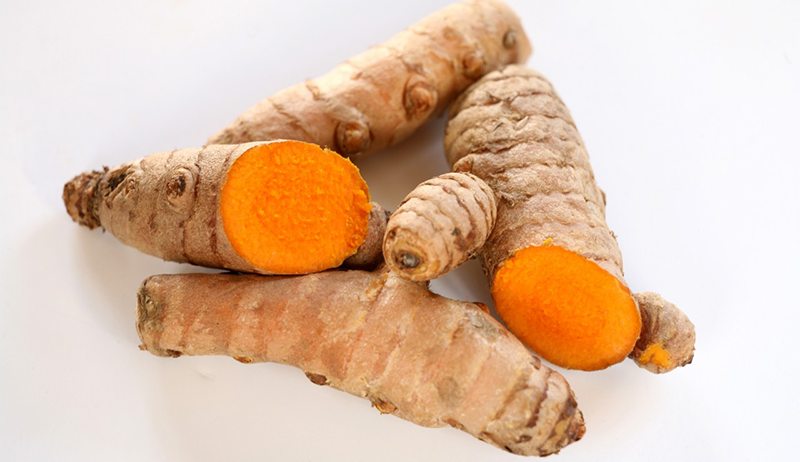The Health Benefits of Turmeric

Turmeric has received attention as a promising natural medicine for a variety of health concerns. Learn more about the potential benefits of this spice.
You may have seen weird-looking, root-like turmeric lurking in the fresh produce section of your grocery store. It’s related to ginger and has a similar shape, with a bright orange color.
In fact, turmeric is the spice that gives Indian food and American mustard their yellow color.
It turns out that turmeric may hold health benefits for certain conditions.
The part of the plant that produces the spice and its potential medicinal benefits is often referred to as the root or “rootstock” of the turmeric plant (Curcuma longa). It’s technically something a bit different, a rhizome (a horizontally-growing stem that develops underground).
The spice derived from the turmeric rhizome has been used in cooking and medicinally in Asia for thousands of years.
YOU MIGHT ALSO LIKE: Preserve Your Bones with Curcumin
What are the health benefits of turmeric?
Researchers have investigated the effects of bioactive components in turmeric called curcuminoids — in particular, curcumin. The health benefits of turmeric and, especially, curcumin in preventing and treating a variety of diseases and conditions are being extensively researched.
By itself or as an add-on to other treatments and medications, turmeric and curcumin are being studied for treating arthritis, osteoporosis, Alzheimer’s disease, diabetes, certain digestive diseases, metabolic syndrome, high cholesterol, and certain cancers.
One of the most well-studied aspects of curcumin is its anti-inflammatory properties, which have benefits in treatment of many of those conditions. Curcumin has also been shown to be as effective as ibuprofen in treating pain caused by knee osteoarthritis. It is also an effective antioxidant.
Gaining the health benefits of turmeric requires a little planning because it’s poorly absorbed in the digestive tract and rapidly metabolized and eliminated. In supplement form, you should take it with food. If you’re simply adding turmeric to food for a boost to your already healthy diet, be sure to add black pepper, which helps absorption. Black pepper contains piperine, a known bioavailability enhancer.
Because turmeric typically contains just 3 to 6 percent curcumin, you may want to take it as a supplement if you’re looking for a therapeutic effect. (If you take medication, talk to your doctor before adding any supplement.)
Turmeric and curcumin supplements in capsules, pills, powders, and drops are widely available. It’s generally recommended that you take between 400 and 600 mg of curcumin three times a day. This is the equivalent of about 4 tablespoons of fresh turmeric, or 1 tablespoon of turmeric powder.
When to be cautious
Curcumin has been shown to have an anti-platelet effect, meaning it may reduce the risk of blood clots. If you take blood-thinning supplements or medications, however, avoid high doses of curcumin or turmeric; the combination may increase your chances of bleeding.
Likewise, if you take anti-diabetes drugs, avoid high doses of turmeric or curcumin, which can lower your blood sugar levels. Theoretically, combining the two could have an additive effect, increasing your risk of hypoglycemia.
How to get more turmeric in your diet
Turmeric has a warm, peppery, slightly bitter flavor. If you’re a fan of smoothies or juicing, try throwing in a hunk of the raw root or sprinkling in some of the ground powder — don’t forget the pepper — to increase the nutritional benefits of your drink.
If you like to cook, try a traditional Indian dish. You can also add turmeric to everything from soups to roasted vegetables and stir-fried dishes, along with rubs for meat to give them a warm flavor and beautiful color.
Here’s a simple recipe to get you started:
Sautéed cabbage
Ingredients
- ½ head green cabbage
- 1 tablespoon coconut oil
- 1 ½ teaspoons powdered turmeric
- Salt to taste
Directions
Thinly slice the cabbage. In a large skillet, heat the coconut oil over medium-high heat. Add the cabbage and toss to coat with oil. Add turmeric and salt. Sautee the cabbage for 12 to 15 minutes until it’s soft. Add more oil or chicken or vegetable broth if more moisture is needed. Serves four.
Each serving contains about 65 calories, 7 g carbohydrates, 4 g fat, 21 mg sodium, 3 g fiber, and 214 mg potassium.
Updated:
January 12, 2023
Reviewed By:
Janet O’Dell, RN